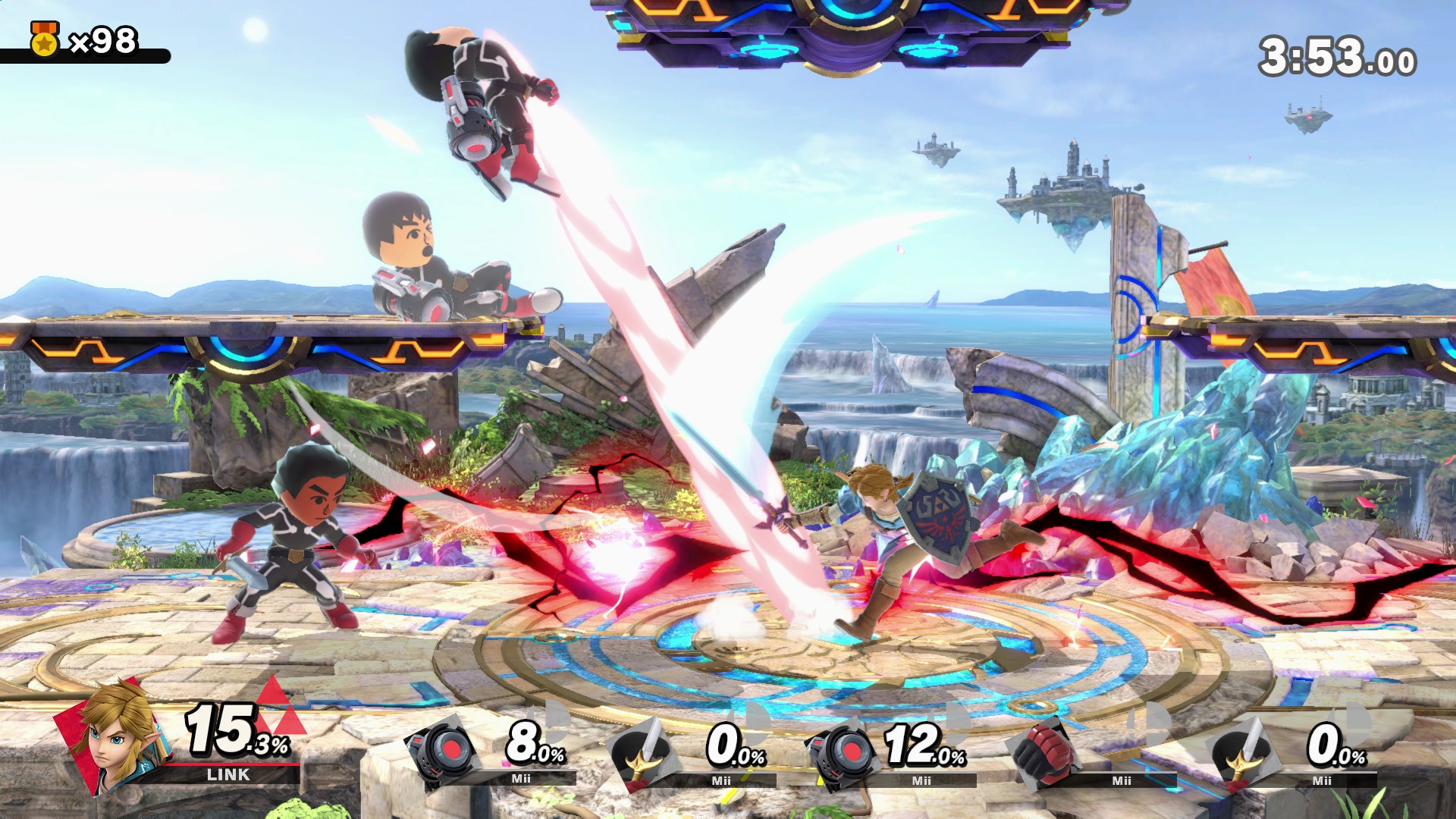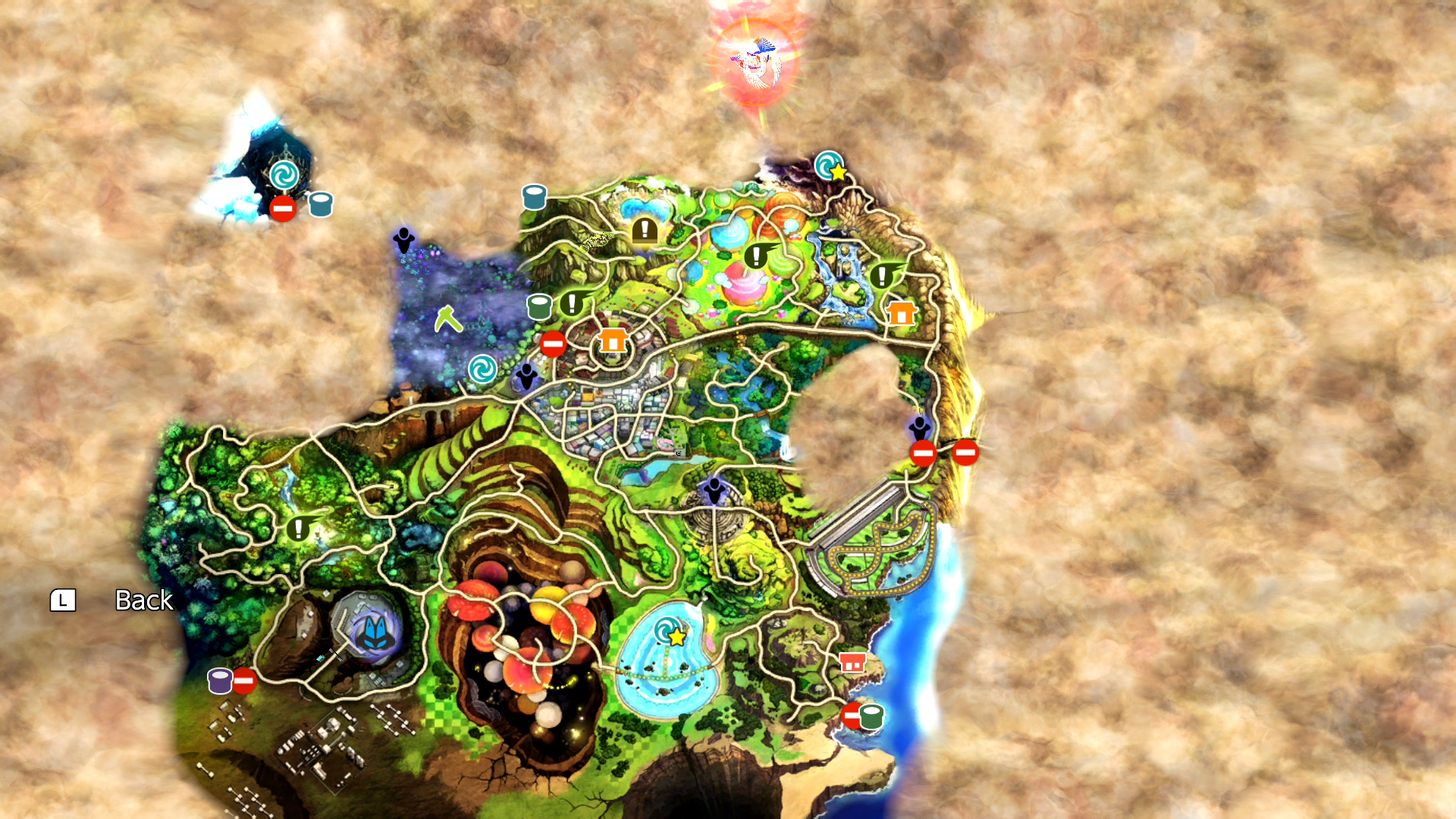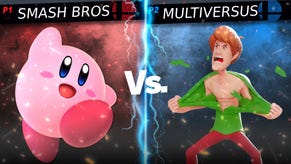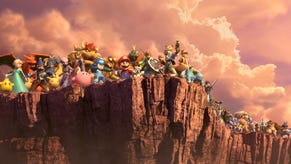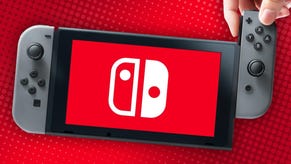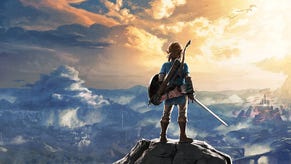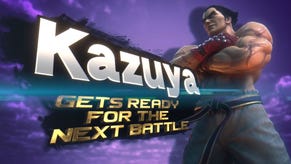Super Smash Bros. Ultimate review: a kitchen sink approach and improved solo modes make this the best Smash ever
With an everything but the kitchen sink approach, Super Smash Bros. Ultimate lives up to its name - it's the best gaming cross-over experience ever.
There has never been a bad Super Smash Bros. game. Series creator Masahiro Sakurai is both a video game historian and a stickler for detail, and that's always been clear in the Smash series in particular.
Smash is the video game equivalent of a theme park, a chance to see your favourite characters in a different context, and more importantly see them together. Beyond that the series has experimented with features since laying brilliant systemic foundations in the hugely successful Smash Bros. Melee - there's been cinematic stories, mechanics designed to make battles more accessible for party play, and a range of weird and wonderful characters and modes. Some of this has worked, some hasn't.
In Smash Ultimate, the fat has been trimmed to allow for absolutely everything truly important to be included. The result is a sprawling, brilliant game with oodles of content and fan service. There's something for everyone, from the older Nintendo fan who remembers getting a NES one eighties Christmas, to newer fans who have the Switch as their first-ever game console and through Smash might be having their first brush with Captain Falcon, Fox McCloud or Simon Belmont.
The core of Smash Bros. is fighting, of course. At the risk of angering the most hardcore Smash devotees, this is a more party-focused fighting game. It lacks the sort of serious, competitively-focused attitude of a Street Fighter or Tekken - but Smash still has the heart of a fighter all the same. When you boot the game, its main menu defaults to the option that takes you straight into multiplayer that can support anywhere up to eight players at once in high-octane battles.
Those battles can be as serious or as wacky as you like. The default rules are built in such a way where it's a little half-and-half - there's the element of the random in stage hazards and item spawns, but still a great deal of focus on skill, anticipating your opponent's moves and stringing together combos. This is another way in which the game lives up to its moniker: there's the ultimate spread of rules from every game past available, with players able to adjust things in detail to make them as competitively-focused or over-the-top random as you like. If you want Smash to be Mario Party levels of stupid and random, you can. If you want to lock it down to a pure one-on-one contest of skill, that's fair game too.
The action in Super Smash Bros. Ultimate is largely built off the successful systems in Smash 4, the entry for Wii U and 3DS - so much so that when the game was first announced pedantic internet nerds spent ages arguing about if it was actually an 'enhanced port' or not (definitely not, by the way). There's good news in this: after a few major missteps in the design of Brawl on the Wii, Smash 4 was a significant return to form for that crucial balance between party play and properly-balanced competitive action.
The fighting has been refined in clever ways, and the most significant tweak for my money is how 'Final Smash' super moves have been changed, with many characters getting entirely new super moves that make them less broken in one way or another. Between that and the addition of the option of a charging meter for super moves that mimics similar mechanics in traditional fighting games, the Final Smash might now have some scope outside of party settings. None of the changes from Smash 4 are significant enough that they'll likely persuade Melee loyalists still competitively playing that game 17 years on to switch, mind.
So far so similar, then - and the sneering debate about enhanced ports actually holds some water here. Then you look at everything else, and it becomes clear how much is actually all-new.
Smash is a multiplayer fighting game first, but Ultimate is arguably the best attempt Nintendo has made at getting the single-player content right for the series. The best so far, for my money, was Melee's combination of an arcade ladder style Classic Mode, a mix of platforming and fights in Adventure Mode and then modes like All Star. But since then the series has struggled to expand and grow beyond those concepts. A large, cinematic-style story in Brawl made for good trailers but wasn't very meaningful in-game. Smash Ultimate aims to split the difference, giving players a big story-driven set-up for its largest single-player mode before letting players loose in a narrative-free sandbox.
That sandbox is World of Light, where players must rescue the all-stars of Smash in order to build their character roster, while facing off against and partnering up with Spirits. Spirits are essentially representations of characters from the series' in Smash that aren't available in character form. Sonic the Hedgehog's arch nemesis Dr. 'Eggman' Robotnik isn't a playable fighter, for instance, but he shows up as a spirit. In this, the world of Smash expands, and Ultimate is a better representation of the history of Nintendo as a whole than any previous game in the series.
In fighting terms, Spirits are represented by existing playable characters with unique tweaks to make them more like the characters they represent. Street Fighter's M. Bison uses his purple hued Psycho Power to attack, for instance, so in Smash he's represented by Ganondorf, who has similar-looking purple magic and a few moves that already resemble Bison's. Those moves are tweaked to make them even more appropriate, then the parameters of the battle are shifted: the gravity is turned up to simulate the heavier feel of Street Fighter, and rather than traditional Smash rules it's a stamina battle where you deplete health to land a KO - just like Street Fighter. Finally, they set it on a dead-flat stage and pipe in M. Bison's theme tune - voila, you've got a 'fight' against Bison in Smash.
It's incredibly clever, and some of the ways the many rule changes and modes in Smash are used to represent a wide range of characters is really impressive. Spirits aren't even just limited to series' on the playable roster, either, as you'll encounter the likes of Rayman or characters from indie hits like Shovel Knight and Shantae as spirits. Strangely, Square Enix let the side down here - despite Cloud being playable, there aren't any other Square Enix spirits, not even from FF7.
In World of Light you journey across a cutely-drawn map battling spirits in order to recruit them and ultimately awaken fighters. This doesn't get tiresome in the way some previous Smash story efforts have thanks to each spirit battle's unique mechanics, while the ability to equip and level up spirits you've defeated and make use of their abilities add a further RPG-like wrinkle to the proceedings. The map is huge, but if that isn't enough there's also New Game Plus, which changes things up decently. It's solid stuff, and the best single-player Smash offering since Melee.
Beyond this Ultimate still has Classic Mode, All Star and other such options, plus Spirit Board, a mode which lets you tackle spirit battles outside of the World of Light context. I will admit I miss some of the old Smash staples like Break the Targets and the side-scrolling Adventure platforming levels a touch - but the trade-off seems fair enough.
The options on offer are impressive, and it's easy to get lost in the single-player offerings - but you must remember that this is a multiplayer-focused game. This could be a black mark against Ultimate for some, but while the solo offerings are strong they're also practically a bonus. This is not a game to buy for solo play alone. If you understand that you'll be fine, especially since the game is generous with character unlocks, rewarding your time sunk with a constant flow of character unlocks to take you from the initial roster of 8 up to a whopping 76.
The size of the roster is mind-blowing too, of course, and the decision to initially lock all but the first 8 characters to join the Smash Bros. universe a stroke of genius. Thanks to this the game feels like it's constantly growing and expanding, with a new character to discover and move set to master always around the corner. It's true there are a lot of boring 'filler' characters from previous games returning here (who really cares about Dr. Mario or Pichu?) but even if you discount those sorts of characters this is a roster of unprecedented size. It's also lovingly created, with each character a brilliantly-crafted representation of their appearance in the games that spawned them. Nintendo has made the classic Castlevania designs work in 3D, and has tellingly done a better job of finding a middle ground between the modern 3D Sonic design and the sensibilities of 2D Sonic than Sega ever has.
This scope and attention to detail continues in other areas of the game; stages feel legitimate, and there's hundreds of both original and remixed music tracks that assemble to make one of the greatest gaming scores ever assembled. This music represents all sorts of games, even those not otherwise represented in the game. I mean, seriously - there's an absolutely sick remix of the Wii Shop Channel music in this game. This is the level of cult depth this game is operating at.
For a series like this the word ultimate is a heavy one. Smash can draw from a huge pool for its content and has a rich history to match. But Super Smash Bros. Ultimate does indeed live up to its name. It's a brilliant game today, as it launches, but tellingly it also leaves me incredibly excited about the future. This is an excellent game that has the feature set to last years - and that makes it a perfect foundation for what will hopefully be years of support of additional characters, stages, music, spirits and other content. That is also perhaps the ultimate recommendation: Ultimate has a mind-boggling amount of content, but I like it so much I'm still hungry for more.



